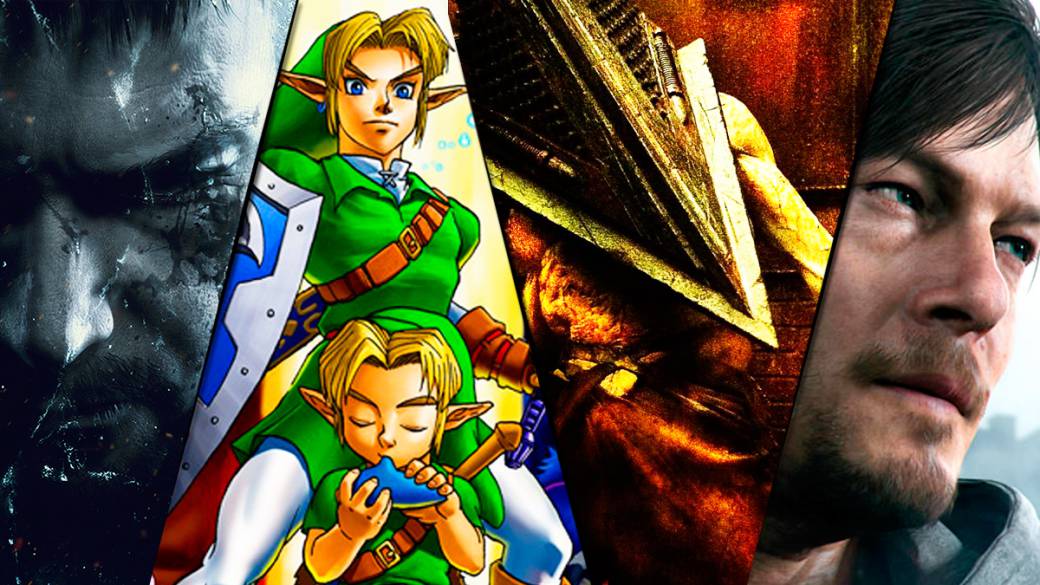
We started October, a month dedicated to terror, dealing with some of the resources that games use to put fear in our bodies.
The countdown to Halloween begins, a celebration already fully established in our country and apologies that many of us take the opportunity to remember or replay our favorite horror games. Naturally, 2020 was not going to be an exception although the scares are arriving somewhat more distributed. So during the next few weeks there will surely be countless debates about the best exponents of the genre and companies will also take advantage of that pull to make launches. This is the case, for example, of Amnesia: Rebirth (October 20), the consolation port of Song of Horror (the 29th) or the new installment of Dark Pictures Anthology, Little Hope (the 30th).
As a prelude to all of this, today we are going to do something a little different and treat terror a little more broadly. The objective here will not be so much to look at specific sagas or games – although some are particularly useful to us – as to try to understand where their appeal lies and also to see some of the resources available to developers to create that tension that crosses through the screen to travel our spine. It’s the mechanics of horror, the intricate art of making having a hard time a rewarding experience.
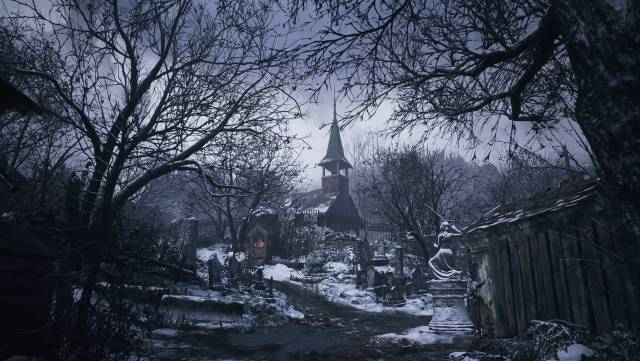
Starting point: interactivity
Video games are a young medium compared to literature or cinema, but that has not prevented it from being one of the most evolved when it comes to horror applications. Much of this is due, of course, to technical evolution itself, which in the span of a few decades has allowed studios to go from creating monsters using simple sprites to building environments so realistic that the mere hint of danger could be overwhelming. the most painted.
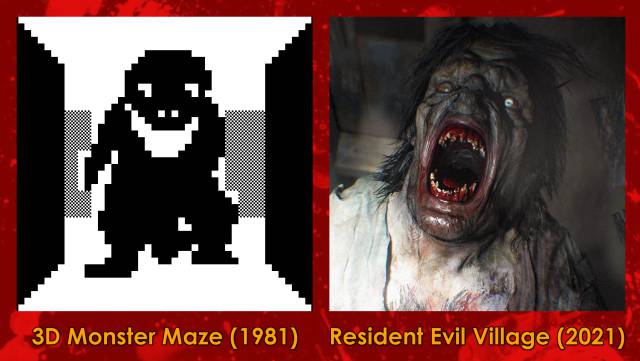
But more interesting if possible is the fact that in them terror is not usually a genre in the strict sense. Although in other media the individual plays an active role as spectator or reader, he remains a passive receiver of the narrative. It assimilates and interprets it, but does not condition the events (except for the occasional exception that confirms the rule), so they can be classified simply based on their theme, be it horror, action, comedy or a combination of several. Of course, these kinds of labels also apply to many video games, but they are insufficient because player mediation is essential for progress, so it is necessary to first define the terms in which mediation occurs.
This opens up another tangent that we will explore later, but first it is important to insist on the importance of this turn towards an active role. While other media are capable of generating suspense, anxiety or even panic through resources such as detailed descriptions of thoughts and environments, darkness, macabre imagery, unnerving music or sudden changes in sound, to all this video games add fallibility. A movie will always reach the predetermined conclusion unless we stop watching it. A book will stick to each semicolon even if we reread it ten times (again, except for very specific exceptions such as “Choose your adventure”). In a game, the player not only follows a protagonist, he is also a protagonist. The one who makes mistakes and pays their consequences.
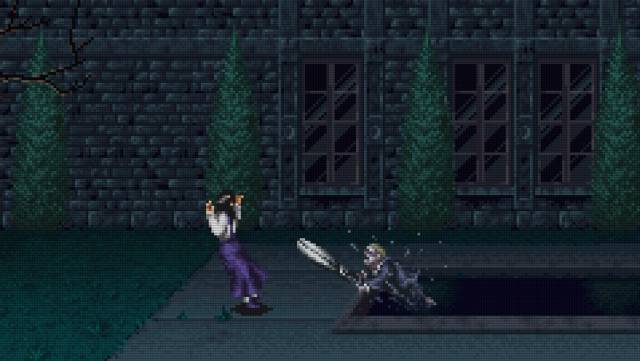
Obviously, this cost is not comparable to that of the virtual avatar, who can be killed in the most brutal way that developers can think of, but it does imply a loss of control on a figurative and literal level. The bond that joins player and character is cut, and with it the narrative itself, which goes back and restores said control to a previous point from which we can once again face the same situation with more experience, skill or even intention to find an alternative side. Of course, this principle applies as much to a Silent Hill as to a Space Invaders or a Super Mario, since the video game by definition includes the error in almost all its formulas and tones even if death is not always the result of failure.
On the other side of the screen: Immersion
Interaction, therefore, reinforces the mechanisms of terror, but first they must be established, because neither the possibility of losing is enough to generate anxiety, nor does anxiety always manifest itself in a context of horror. This is where things get complicated both by the intrinsic subjectivity of fear and by the concept of immersion, which often has a technological and artistic component, but is also often linked to a conceptual one. Something that could be seen already from the first 8-bit computers and consoles, where a form as primitive as effective as horror could be experienced in point-and-click adventures aimed at creating tension from texts and images (Uninvited, Shadowgate) while film adaptations such as Halloween or Infernal Possession sinned from being excessively simple and arcade aesthetic homages to instill similar sensations.
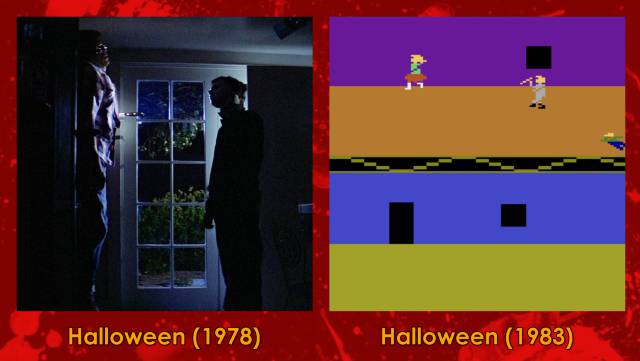
Speaking of aesthetics, and taking advantage of the fact that MediEvil – one of the Halloween games par excellence – was remade with cutting-edge graphics recently, it should also be remembered that the theme of horror is not equivalent to horror as such. Just like Halloween, the party, is an event suitable for the youngest, games for all audiences can also include imagery of the genre. Without leaving the 32-bits, the ghost mansion of Super Mario 64 is a good example of a level with an atmosphere “of terror” and even some frights – like the piano that comes to life and tries to devour us -, but that would be difficult to describe as terrifying from the age of twelve.
The bottom of the well or the Temple of Shadows below Kakariko in Ocarina of Time is another story, and a good example of the nature of horror as something gradual and not a sudden change from white to black, especially one based on the meticulous construction of an atmosphere and not simple scares or “jump scares”. In an atypical exercise for Nintendo – to the point that he would soften it years later in his review – the first Zelda 3D featured zombies that paralyzed Link with loud, high-pitched screams, bloodstained monsters and rooms decorated by instruments of torture, with considerable effort also put into the music and the color palette to make players of any age uncomfortable.

It goes without saying that these elements of horror are not as explicit or intense as those included in other games aimed specifically at adult audiences already in that same generation (Resident Evil, Silent Hill), but they are effective because of the contrast they offer to the exploration of the Superficial Hyrule, large and animated, without treating this part as simple levels to add thematic variety (in the case of Super Mario 64), but as a natural extension of it, serious and consistent with the rest of the world and its history, which also it would freeze the blood of the nearby inhabitants if they had the slightest idea of the horrors that dwell under their feet.
Alone in the Dark: The Effects of Isolation
Beyond the gloomy setting, a component not strictly necessary, but common and effective during the exploration of any underground dungeon, haunted mansion or abandoned space station worth its salt is isolation. Alone in the Dark, one of the main inspirations when it comes to consolidating survival horror as its own genre, was not a particularly dark game despite its name, but it was true to the loneliness part. When Capcom set out to reimagine the Sweet Home concept years later, it not only discarded the RPG mechanics and imitated the fixed camera system – ideal for creating tension by controlling what information enters or does not enter each of the screens – it also discarded the presence of several characters in the group managed by the player.
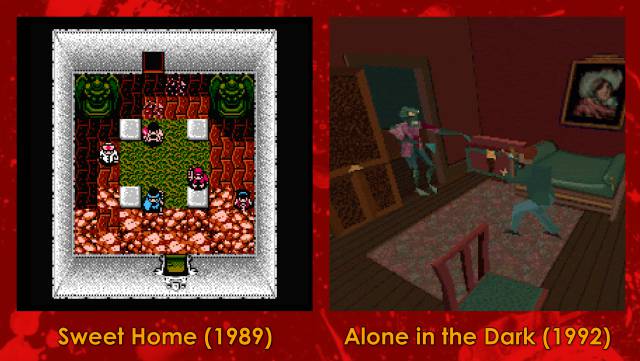
Although this kind of decision could initially arise from the simple economics of design, the result is another factor that contributes to the feeling of vulnerability. Although the presence of secondary players can provide more narrative and playable dynamics, isolating the protagonist is also isolating the player, who does not find the natural comfort that the social component usually provides in cases of danger or uncertainty. It is true that interactions with other people can also generate anxiety and Silent Hill, a saga more interested in disturbing using the psychological component, sometimes resorts to secondary ones with erratic behaviors to bother at a subconscious level. But as a general rule, having a helping hand, even if handled by the AI or ourselves (see Resident Evil’s own prequel, Zero), relieves some of the tension.
Efficient samples of this can also be found in solitary adventures bordering the fringes of terror like some Metroid or Dark Souls. The latter is quite an interesting case because, in addition to including a lot of traditional horror imagery in enemies and locations, it simultaneously illustrates the effects of isolation – the original more than its successors in requiring a lot of travel on foot without teleportation – and the occasional use of NPCs to dislodge rather than to comfort. Connecting to the internet to enable invasions, invocations to fight accompanied against bosses or the appearance of clues that as a general rule help, but can be used to give unreliable information is also a good demonstration of the change in the perception of their world. and thus favor a state of paranoia. Something that, again, games like Silent Hill 2 know for a while.
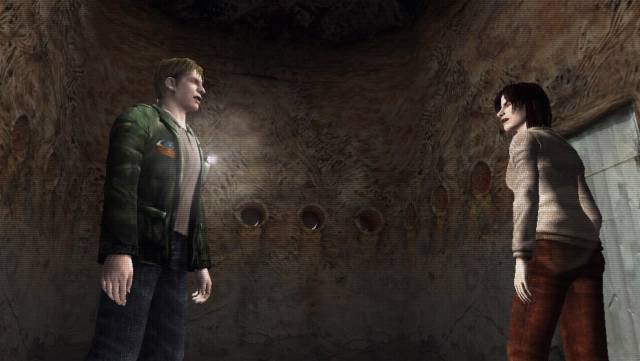
In short, none of this is to imply that there is a “correct” way to design or play a game of this nature, as different approaches offer different attractions. Project Zero II, one of the great exponents of horror in video games – so much so that we will deal with it in detail later – opted for two protagonists without denying a spooky atmosphere. And Until Dawn, the popular premiere of this generation, went to the other extreme to pose a group narrative adventure. Having so many characters not only allows you to recreate dynamics more typical of film or television, but also to keep premature deaths by player action as part of the story until its end. As a result, it lacks the kind of bond that other games provide, but it does serve as an effective window into a more melodramatic and morbid experience.
Concrete horror vs. abstract horror
This idea of controlling the destiny of the characters from our side of the screen has, of course, its opposite version on the other side. The player can also be manipulated, especially with a view to generating uncertainty about the danger we face or the world around us. By this we mean, on the one hand, the concrete horror that, even nurtured by fictional elements such as zombies or aliens, is governed by a series of constant laws that we can understand and use to our advantage. And on the other, abstract horror, whose nature is fickle or even immaterial as in the case of specters, daydreams or distorted realities that the player does not get to – or needs – to fully understand.
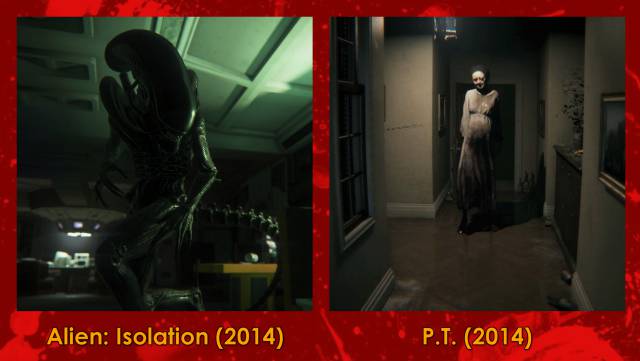
As in the case of isolation and cooperation, it is a dilemma where each method brings its own advantages and experiences. The tangible terror of games like Alien: Isolation or the recent Resident Evil 2 remake tends to be more organic because it clearly delimits what we can do and what the enemies can do, so the tension derives above all from the need to overcome to each situation with actions in the player’s hand. The terror of titles like P.T. or The Evil Within, on the other hand, is more inclined to take licenses. To blur the rules that govern its operation so that tension arises from unpredictability, from the feeling that we are almost never completely in control because it is not a reality that can be controlled, but rather to which we have to react.
This method, for example, does not need to camouflage the apparitions or teleports of a creature like Lisa (P.T.) because it is part of the nature of her world and what is terrifying when exploring it. Doing the same with the Xenomorph or Mr. X, on the other hand, would look like a trap and break the dive. Of course, these kinds of tricks, although not always perceptible, are used in both aspects, and the types of terror are not polar opposites, but can be complemented. Eternal Darkness, a game inspired by Lovecraft’s cosmic terror, linked hallucinations such as the sudden fall of the character’s head, the inversion of the stage or other tricks to break the fourth wall (disconnect the remote, lower the volume, simulate deletion of the game) to a visible and quantifiable meter that the player could empty using specific mechanics and thus have a somewhat more “earthy” experience (an idea that Bloodborne would also make its own interpretation this generation).
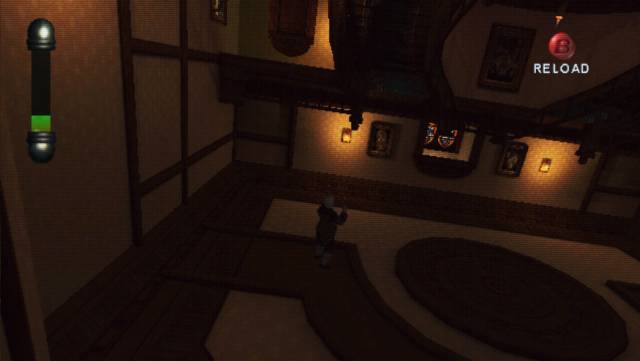
Precisely the breaking of the fourth wall, although a fundamentally fanciful element and more typical of abstract terror, affects a primary level because it refers directly to the player and not to his avatar. Just as resorting to common phobias (spiders, snakes) or jump scares tends to have an immediate effect by activating self-preservation instincts, this process exploits another visceral vulnerability by shifting the focus from the character to the player, creating a new state of alertness and hyperconsciousness about ourselves. It is one of the main reasons why, despite settling in three-dimensional terror for many years, 2D games like Undertale or Doki Doki Literature Club still manage to disturb.
Flight vs. confrontation
We close the circle by returning to the first point, the interactive component, to see a little better its practical possibilities. As we said before, terror can take many forms and in the field of video games that includes genres, although a frequent categorization method is based on the presence or absence of combat. Or in other words, if the mechanics are geared towards confrontation or flight from the source of terror. This last aspect was, in fact, the most common in its beginnings, where text adventures with instant deaths and games with movement too limited to integrate a satisfactory combat predominated.

The entrenchment of survival horror took an almost total turn to that during the second half of the nineties and principles of this century, although later the terror without combat had a strong rebound from games like Amnesia: The Dark Crescent, Outlast and other indies that revitalized their interest. At a time when the big sagas were not always convincing, they either disappeared or veered drastically into action (for example, the rapid acceleration of the Dead Space trilogy in just one generation cycle), technology was already at a point where the studies little ones could build terrifying atmospheres with few resources.
This new boom was largely defined by the increased proliferation of the first person – a perspective that facilitated immersion while saving work with animations and the camera – as well as a large increase in the rate of pre-programmed scares ( scripts). Generally shorter experiences and where the player has less control, but in spite of it as or more stimulating at a physiological level due to the generation of adrenaline. Some extreme cases of this exchange of the most classic progression by the succession of scares have enjoyed great viralization (Five Nights at Freddy’s), since seeing other players startled through the internet has also become part of the experience, although their journey as games tends to be shorter in other ways than that of mere duration.
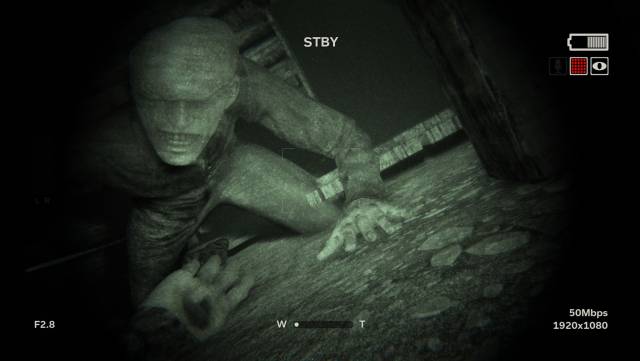
That said, the efficiency of this new batch by appealing to our most primal instincts is unquestionable, and consequently they have conditioned the panorama of terror on a more global level: although years before Condemned already showed a viable path by de-escalation – but not eliminating – the action in First person, it wasn’t until more than a decade later that Resident Evil 7 decided to take that same perspective and veer from the cartoonish action in which the saga was moving toward a more raw intimacy with danger, adding some unarmed sections in the process. so scripted they would fit perfectly into any Outlast.
Continuing with the trend, in the field of combat —or lack of— there is no unequivocally superior option either, although the use of weapons tends to give rise to a more elaborate design, since in well-measured quantities they introduce variables such as ammunition management or other consumables, as well as the reflection on the battles that it is advisable or not to fight. The player has more responsibility, so to the visceral fear is added another of a tactical nature, especially in games with more severe penalties for death – the classic Resident and their save rooms with limited uses come to mind. Of course, on the other hand, combat doesn’t have to involve the use of guns either, and that’s where we reintroduce the Project Zero saga.

Created by Tecmo in the early years of PS2, the first Project Zero (Fatal Frame in America) was one of many games that inherited the overall design and fixed cameras from survival horror, but it also offered a unique insight into that trade-off between confrontation and flight: ghosts could not be harmed by material means, but neither should we escape from them, but rather maintain position to weaken them through the use of a magical camera that required good position and a firm hand with first-person pointing .
Shortly after its sequel, subtitled Crimson Butterfly, curled the curl with the addition of a co-protagonist who reduced the previously exposed uneasiness due to prolonged isolation, but in return served as a new source of anxiety by not having her own camera and being a target easy to which ghosts were most attracted. A good reminder that the mechanics of horror are not only many and varied, but they can also be used in many ways effectively. Now we could start over and write another text using different examples to illustrate different ideas. Or we can turn off the lights and have a hard time playing the game of our choice. It’s already October, so the excuse is on.

